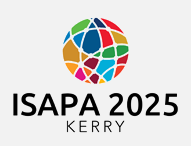Start Date
16-6-2025 10:00 AM
End Date
16-6-2025 11:30 AM
Abstract
The design thinking approach (DTA) as a transdisciplinary method (Manjunath, A. A., et. al., 2023), is a problem-solving process (Cleveland, 2023) that addresses individuals’ needs, in a manner that technologically feasible (Brown, et. al., 2020). Although, DTA is structured as 1- empathizing, 2 - defining, 3 - ideating, 4 - prototyping, and 5 - testing, the overall process is non-linear.
This study provides an in-depth examination of how DTA was utilised for redeveloping an accessible game for the people with visual impairment (PwVI).
DTA and qualitative research were applied by the principles of inclusive, accessible design, along with colour contrast, audio descriptions that are compatible with smart phones, and tactile additions. Purposively selected participants (blind, vision loss, elderly) were included in needs analysis (n=11) and for testing (n=21). By applying DTA, at (1) empathizing stage literature review, interviews carried out to understand the needs and create the empathy map, at (2) defining stage, the problem was defined by translating the data into a solution proposal that would accommodate the needs, at (3) ideating stage the solution was conceptualised, and the content were created. At this stage, feedback has taken from 5 field experts. At (4) prototyping stage, the necessary corrections were made, the researcher worked on the physical product and digital features. At (5) testing stage the first prototype was tested with 4 different groups.
It can be said that developing an accessible game, to empower participation in social, fun activities, along with promoting paralympic sports, would have an enhancing effect (Aksoy, 2024).
This product is being revised, after the 2024 Paralympic Games for re-testing.
Recommended Citation
AKSOY, ROSA AYSEGUL, "Redeveloping for accessibility: Applying design thinking approach to create a card game for people with visual impairment" (2025). International Symposium of Adapted Physical Activity and International Symposium on Physical Activity and Visual Impairment and Deafblindness. 8.
https://sword.mtu.ie/isapa/2025/day1/8
Redeveloping for accessibility: Applying design thinking approach to create a card game for people with visual impairment
The design thinking approach (DTA) as a transdisciplinary method (Manjunath, A. A., et. al., 2023), is a problem-solving process (Cleveland, 2023) that addresses individuals’ needs, in a manner that technologically feasible (Brown, et. al., 2020). Although, DTA is structured as 1- empathizing, 2 - defining, 3 - ideating, 4 - prototyping, and 5 - testing, the overall process is non-linear.
This study provides an in-depth examination of how DTA was utilised for redeveloping an accessible game for the people with visual impairment (PwVI).
DTA and qualitative research were applied by the principles of inclusive, accessible design, along with colour contrast, audio descriptions that are compatible with smart phones, and tactile additions. Purposively selected participants (blind, vision loss, elderly) were included in needs analysis (n=11) and for testing (n=21). By applying DTA, at (1) empathizing stage literature review, interviews carried out to understand the needs and create the empathy map, at (2) defining stage, the problem was defined by translating the data into a solution proposal that would accommodate the needs, at (3) ideating stage the solution was conceptualised, and the content were created. At this stage, feedback has taken from 5 field experts. At (4) prototyping stage, the necessary corrections were made, the researcher worked on the physical product and digital features. At (5) testing stage the first prototype was tested with 4 different groups.
It can be said that developing an accessible game, to empower participation in social, fun activities, along with promoting paralympic sports, would have an enhancing effect (Aksoy, 2024).
This product is being revised, after the 2024 Paralympic Games for re-testing.

